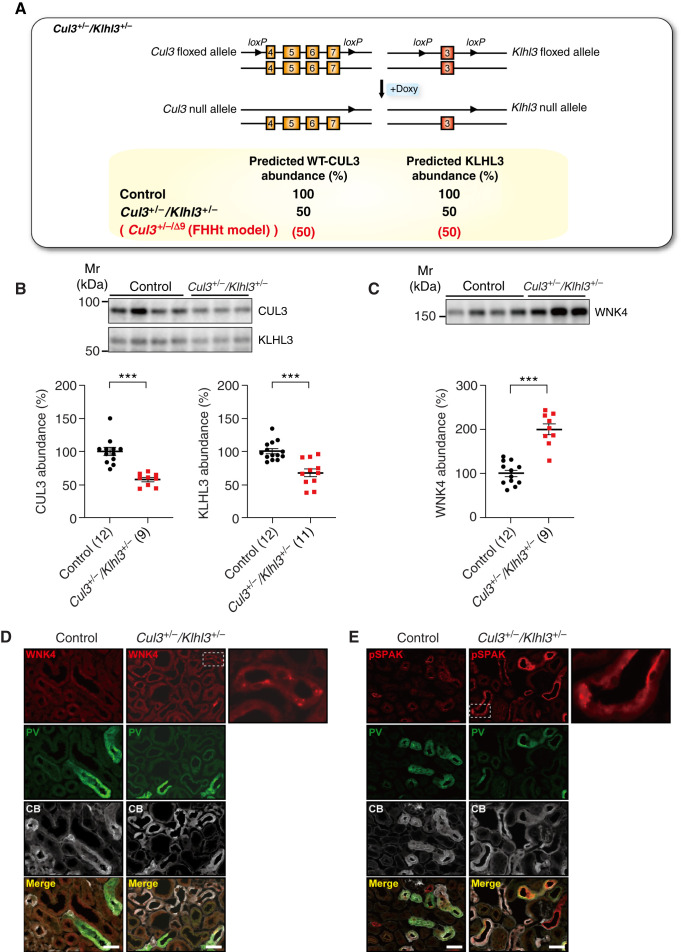Figure 4.
Combined CUL3 and KLHL3 deficiency activates the WNK4-SPAK pathway. (A) Cul3 and Klhl3 heterozygous mice (Cul3+/−/Klhl3+/− mice) carried one WT Cul3 allele and one with exons 4–7 floxed, and one WT Klhl3 allele and one with exon 3 floxed. The Pax8-rtTA-LC1 system was used for tubule-specific inducible recombination and doxycycline treatment was predicted to reduce abundances of both CUL3 and KLHL3 by 50%, similar to what we observed in the Cul3+/−/Δ9 model of FHHt (Figure 1, shown in red). (B) Western blotting revealed significantly lower abundances of CUL3 and KLHL3 in Cul3+/−/Klhl3+/− mice compared with control mice. (C) Compared with control mice, Cul3+/−/Klhl3+/− mice showed significantly higher WNK4 abundance. Individual values and mean±SEM are shown. For (A)–(C) statistical differences were examined by two-tailed unpaired t tests (B and C). ***P<0.001. (D) Immunofluorescence revealed higher WNK4 (red) aggregation in parvalbumin-positive (PV, green) and calbindin-positive (CB, white) cells. (E) Cul3+/−/Klhl3+/− mice showed higher phosphorylated SPAK (pSPAK) abundance with some aggregation (red) in PV- and CB-positive cells. Representative image, three mice total were analyzed with similar results. Scale bars: 50 µm.

